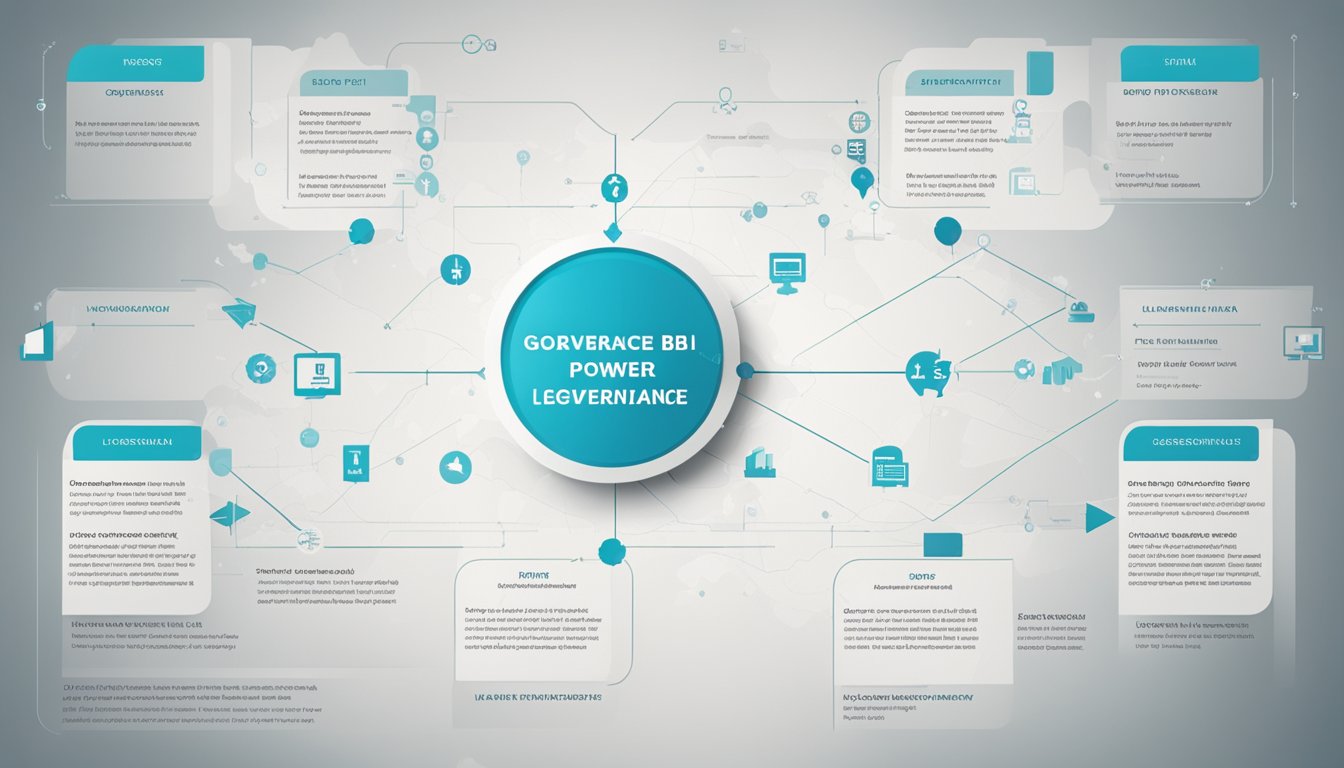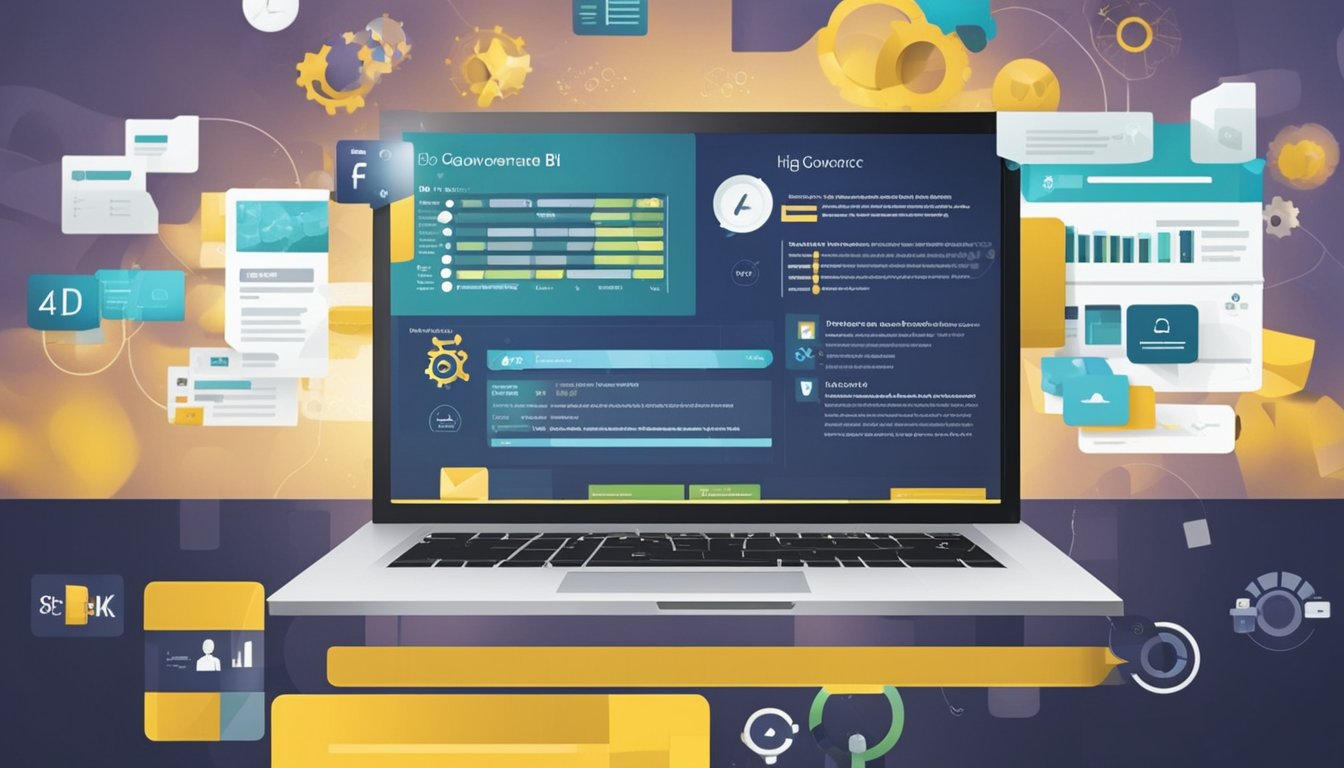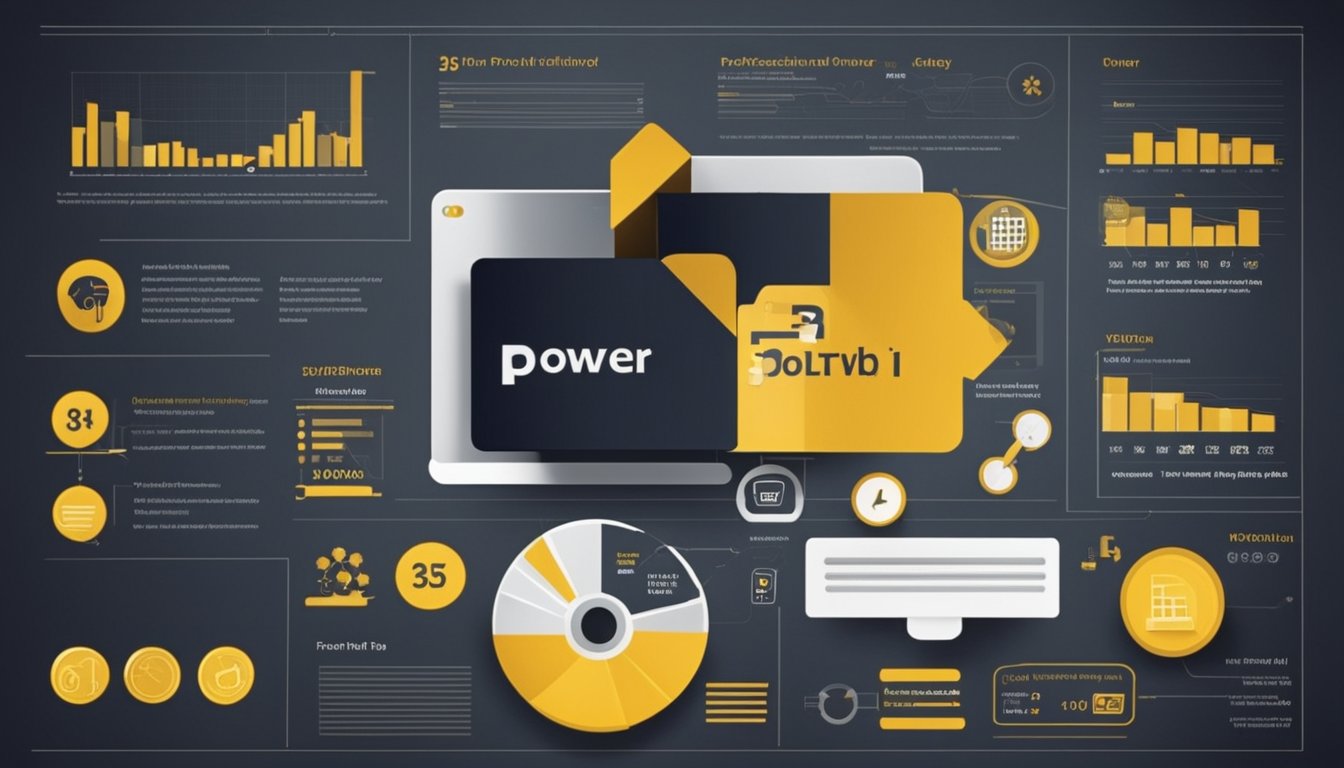Power BI Governance Delivery Strategy and Licensing Explained
Power BI has become one of the most popular business intelligence tools in recent years, thanks to its user-friendly interface and powerful features. However, as organizations increasingly rely on Power BI to make data-driven decisions, it becomes important to ensure that the platform is being used in a way that aligns with the organization's goals and values. This is where Power BI governance comes in.

Power BI governance refers to the set of policies, procedures, and guidelines that organizations put in place to ensure that their use of Power BI is consistent, effective, and secure. One of the key aspects of Power BI governance is delivery strategy and licensing. This involves determining how Power BI content will be shared and distributed within the organization, as well as which licensing options will be used.
Effective delivery strategy and licensing can help organizations get the most out of their investment in Power BI, while also ensuring that data is being used in a way that aligns with the organization's goals and values. In this article, I will explore some of the key considerations when it comes to Power BI delivery strategy and licensing, and provide some tips for enhancing user experience through effective governance.
Key Takeaways
- Power BI governance is essential for ensuring that the platform is being used effectively and securely.
- Delivery strategy and licensing are key aspects of Power BI governance, and involve determining how content will be shared and which licensing options will be used.
- Effective delivery strategy and licensing can help organizations get the most out of their investment in Power BI, while also ensuring that data is being used in a way that aligns with the organization's goals and values.
Power BI Governance: An Overview

As a Power BI administrator, I understand the importance of implementing a governance strategy that ensures the effective, controlled, and valuable operation of a BI environment. To achieve this, I implement a comprehensive governance model that includes best practices, policies, and processes that are documented and audited regularly.
My governance model follows a bottom-up approach, which means that it is designed to address the needs of individual users and teams while also adhering to organizational rules and regulations. This approach ensures that both the individual and the organization are protected and that there is standardization across the entire BI environment.
One critical aspect of my governance model is data governance. As defined by the Data Governance Institute, data governance is "a system of decision rights and accountabilities for information-related processes, executed according to agreed-upon models which describe who can take what actions, with what information, and when, under what circumstances, using what methods." This means that I ensure that data is protected, controlled, and used in a way that aligns with the organization's goals and objectives.
Another important aspect of my governance model is the establishment of a Center of Excellence (CoE). The CoE serves as a centralized resource for Power BI best practices, training, and support. It also acts as a hub for the development and implementation of governance policies and procedures.
To ensure that my governance model is effective, I regularly review and update my policies and procedures. I also conduct regular audits to ensure that the BI environment is secure and that all users are adhering to the established rules and regulations.
In summary, my governance model is designed to ensure that the BI environment is controlled, protected, and valuable to the organization. It is based on best practices, policies, and processes that are documented and audited regularly. By implementing a comprehensive governance model, I can ensure that the BI environment is effective and aligned with the organization's goals and objectives.
Delivery Strategy: From Planning to Execution

As I plan the delivery strategy for Power BI governance, it is essential to consider the business objectives and requirements. The delivery strategy should be managed effectively to ensure success. Effective management involves deploying changes and ensuring that the managed self-service aligns with the business decisions and questions.
Planning the delivery strategy requires a thorough understanding of the business objectives and requirements. The delivery strategy should align with the business objectives and ensure that the Power BI content is relevant to the business. A change management plan should be in place to manage any changes to the Power BI content.
To ensure that the delivery strategy is successful, it is essential to manage the Power BI content effectively. The managed self-service should be integrated with the existing IT-managed self-service to ensure that the Power BI content is aligned with the business requirements. The delivery strategy should also consider the integration of the Power BI content with other data sources to provide a complete view of the business.
The delivery strategy should ensure that the Power BI content is managed effectively. The managed self-service should be aligned with the business requirements and ensure that the Power BI content is relevant to the business decisions and questions. The delivery strategy should also consider the deployment of changes to the Power BI content to ensure that it remains relevant to the business.
In summary, the delivery strategy for Power BI governance should be planned effectively to ensure that it aligns with the business objectives and requirements. The managed self-service should be integrated with the existing IT-managed self-service, and changes should be managed effectively. The delivery strategy should ensure that the Power BI content is relevant to the business decisions and questions.
Licensing: Power BI Pro and Power BI Premium

As a Power BI user, it's important to understand the licensing options available to you. There are three types of licenses: Free, Pro, and Premium.
The Power BI Pro license is designed for individuals and small teams and costs $9.99 per user per month. With this license, you can create and share reports and dashboards, collaborate with other users, and access all of the standard features of Power BI. You can also connect to a wide range of data sources, including Excel spreadsheets, SQL Server databases, and cloud-based services like Salesforce and Google Analytics.
If you need more advanced features and capabilities, you can upgrade to Power BI Premium. This license is available in two forms: Premium per User (PPU) and Premium Capacity.
The Premium per User license is designed for organizations that need to share content with a large number of users. It costs $20 per user per month and includes all of the features available with Power BI Pro, plus additional enterprise-scale features like larger model sizes, more frequent refreshes, and deployment pipelines.
The Premium Capacity license is designed for organizations that need to support a large number of users and workloads. With this license, you get dedicated hardware resources and the ability to manage and allocate capacity to different workloads. The cost of this license varies depending on the size of the capacity you need.
It's important to note that some features are only available with the Premium license, including paginated reports, AI-powered insights, and the ability to embed Power BI content in other applications. If you need these features, you will need to upgrade to Power BI Premium.
In summary, Power BI Pro is a great option for individuals and small teams, while Power BI Premium is designed for larger organizations with more advanced needs. Evaluate your requirements carefully to determine which license is right for you.
Enhancing User Experience Through Effective Governance

As a Power BI administrator, I understand the importance of delivering a positive user experience to business users. Effective governance can help enhance user experience by ensuring that users have access to the right data and that it is presented in a way that is easy to understand.
Self-service BI is a great way to empower business users to make data-driven decisions. However, without proper governance, it can quickly become chaotic and difficult to manage. Business-led self-service BI can lead to a proliferation of reports and dashboards, making it hard to find the right information.
To mitigate this, I follow guidelines for content ownership and user enablement. I work with data owners to ensure that they have the tools they need to create effective data models and prepare data for analysis. I also encourage business users to explore data on their own, while providing validations and performance monitoring to ensure that their activities do not impact the overall system.
One way to enhance user experience is through the use of Power BI apps. Apps provide a significantly better user experience for consuming enterprise BI content, as they allow for more flexibility and productivity. I plan how Power BI apps will distribute enterprise BI content to consumers, taking into account licensing strategy and content delivery scope.
Another way to improve user experience is through effective communication and collaboration. I configure the Power BI Center of Excellence to encourage collaboration between business users and IT, ensuring that everyone is working towards the same goals. I also use the activity log to monitor user activity and provide feedback to data owners and business users.
In conclusion, effective governance is vital for enhancing user experience in Power BI. By following guidelines for content ownership, user enablement, and effective communication, I can ensure that business users have access to the right data and that it is presented in a way that is easy to understand. This leads to better decision-making and a more data-driven organization.
Frequently Asked Questions

What are the best practices for Power BI governance?
As Power BI adoption increases within an organization, it is important to establish best practices for governance. Some key best practices include defining a clear governance structure, establishing data classification policies, and implementing security measures to ensure data privacy and compliance. Additionally, regularly auditing and monitoring usage and access can help identify potential vulnerabilities and ensure that governance policies are being followed.
How can you ensure compliance with data governance policies in Power BI?
To ensure compliance with data governance policies in Power BI, it is important to establish clear policies and procedures for data classification, access control, and monitoring. This includes implementing role-based access control, defining data classification levels, and regularly auditing usage and access to identify potential vulnerabilities. Additionally, organizations should provide regular training and education on data governance policies to ensure that all users are aware of their responsibilities and obligations.
What are the key considerations for Power BI licensing?
When considering Power BI licensing, organizations should consider factors such as the number of users, the level of functionality required, and the need for on-premises or cloud-based deployment. Additionally, organizations should carefully review licensing agreements and consider factors such as support and maintenance, upgrade options, and pricing models to ensure that they are getting the best value for their investment.
What are the benefits of implementing a Power BI Center of Excellence?
Implementing a Power BI Center of Excellence can provide a number of benefits, including improved governance, increased collaboration, and better alignment with business goals. A Center of Excellence can help establish best practices for Power BI adoption, provide training and support to users, and facilitate communication and collaboration between business units. Additionally, a Center of Excellence can help ensure that Power BI is being used to its full potential and that organizations are getting the most value from their investment.
How can you effectively manage Power BI workspaces?
To effectively manage Power BI workspaces, it is important to establish clear policies and procedures for workspace creation, access control, and monitoring. This includes defining roles and responsibilities for workspace owners and members, establishing data classification policies, and regularly auditing usage and access to identify potential vulnerabilities. Additionally, organizations should provide regular training and education on workspace management best practices to ensure that all users are aware of their responsibilities and obligations.
What is the role of Power BI Sentinel in governance and security?
Power BI Sentinel is a tool that can help organizations monitor and manage their Power BI environment. It provides real-time monitoring and alerting for potential security threats, as well as detailed reporting and analysis capabilities. By using Power BI Sentinel, organizations can identify potential vulnerabilities and take proactive steps to mitigate them, ensuring that their Power BI environment is secure and compliant with data governance policies.

We are committed to delivering a new level of automation that will help organizations save time, money, and staffing resources.
 WRITE FOR US!
WRITE FOR US!
